Practical Tips on How To Train A Rabbit To Poop in One Spot?. Learn practical methods and proven strategies for teaching your rabbit to use a designated area, creating a cleaner and more convenient environment for you and your pet.
Introduction
The comprehensive guide on, How to Train a Rabbit to Poop in One Spot is the ultimate solution for pet owners seeking a cleaner and more organized living space. If you’ve ever been frustrated by scattered bunny droppings, rest assured you’re not alone.
Our comprehensive and proven techniques are designed to transform your rabbit’s bathroom habits and establish a designated spot for their business. Say goodbye to endless cleanup sessions and hello to a tidy, stress-free environment. The journey of consistently teaching your furry friend how to use a designated spot for their bathroom needs can be a rewarding adventure for you and your rabbit. Training a rabbit to poop in one place not only contributes to a cleaner living environment but also strengthens the bond between you and your fluffy companion.
Explain the secrets of cultivating a clean and tidy environment for your rabbit. In, How to Train a Rabbit to Poop in One Spot, Miss Weronika shares her expert insights on creating a harmonious living space for both you and your pet. Say goodbye to scattered messes and hello to a disciplined bunny companion. Miss Weronika guides you through practical steps to establish a designated poop zone, fostering a happy cohabitation with your beloved rabbit.”
In this guide, we’ll explore practical strategies and gentle techniques to encourage your rabbit to adopt a designated bathroom area, making daily life a little more convenient for both of you.
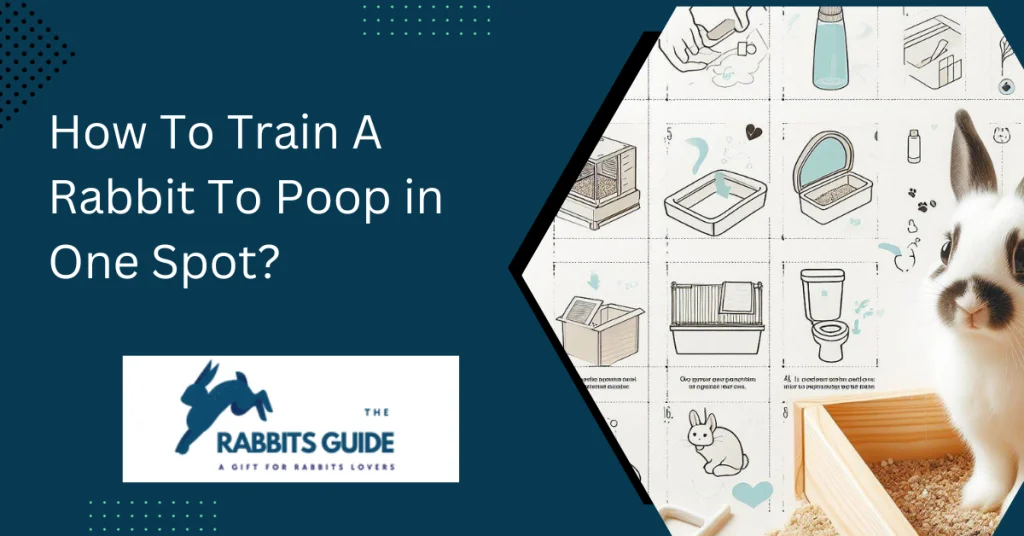
How To Train A Rabbit To Poop in One Spot?
Teaching your rabbit to use a designated spot for their bathroom needs is possible and can make your life and pet much more accessible. Explain this topic, how to train a rabbit to poop in one spot, creating a clean and stress-free environment for both you and your bunny companion.
In this guide, we’ll explore effective techniques and tips.
Understanding Rabbit Behavior
Understanding rabbit behavior during poop training is crucial for successful training sessions. Rabbits are naturally clean animals and often designate areas for bathroom activities. By observing their behavior, such as subtle signs of digging or circling, you can identify and reinforce the appropriate locations for litter box use, promoting a tidy and well-trained rabbit.
Selecting the Ideal Litter Box
Choosing the ideal litter box for your rabbit is crucial for comfort and hygiene. Select a spacious compartment with low sides to accommodate your bunny’s size and allow easy entry. Ensure the litter is non-toxic and absorbent for a clean and happy rabbit habitat.
Litter Training Techniques
Introduce a litter box to your rabbit’s living space. Use a rabbit-safe litter, such as paper-based or hay-based options. Place a small amount of your rabbit’s droppings in the litter box to encourage them to recognize it as an appropriate spot.
Consistent Placement
Position the litter box in a location where your rabbit frequently eliminates.
Rabbits often prefer corners, so choose a corner within their living area.
Positive Reinforcement
Reward your rabbit with treats or affection when they use the litter box correctly.
Avoid punishment for accidents, as it can create stress and fear.
Patience and Observation
Rabbits may adjust to the litter box, so be patient. Observe your rabbit’s habits and schedule to anticipate when they will likely use the litter box.
Spaying/Neutering
Unspayed or unneutered rabbits may be more territorial with their droppings. Consider spaying/neutering to reduce this behavior.
Cleaning and Maintenance
Keep the litter box clean, as rabbits are likelier to use a tidy space. Remove droppings outside the box promptly and clean the area to discourage re-marking.
Training Aids
Use pheromone-based sprays or litter additives to attract rabbits to the designated area.
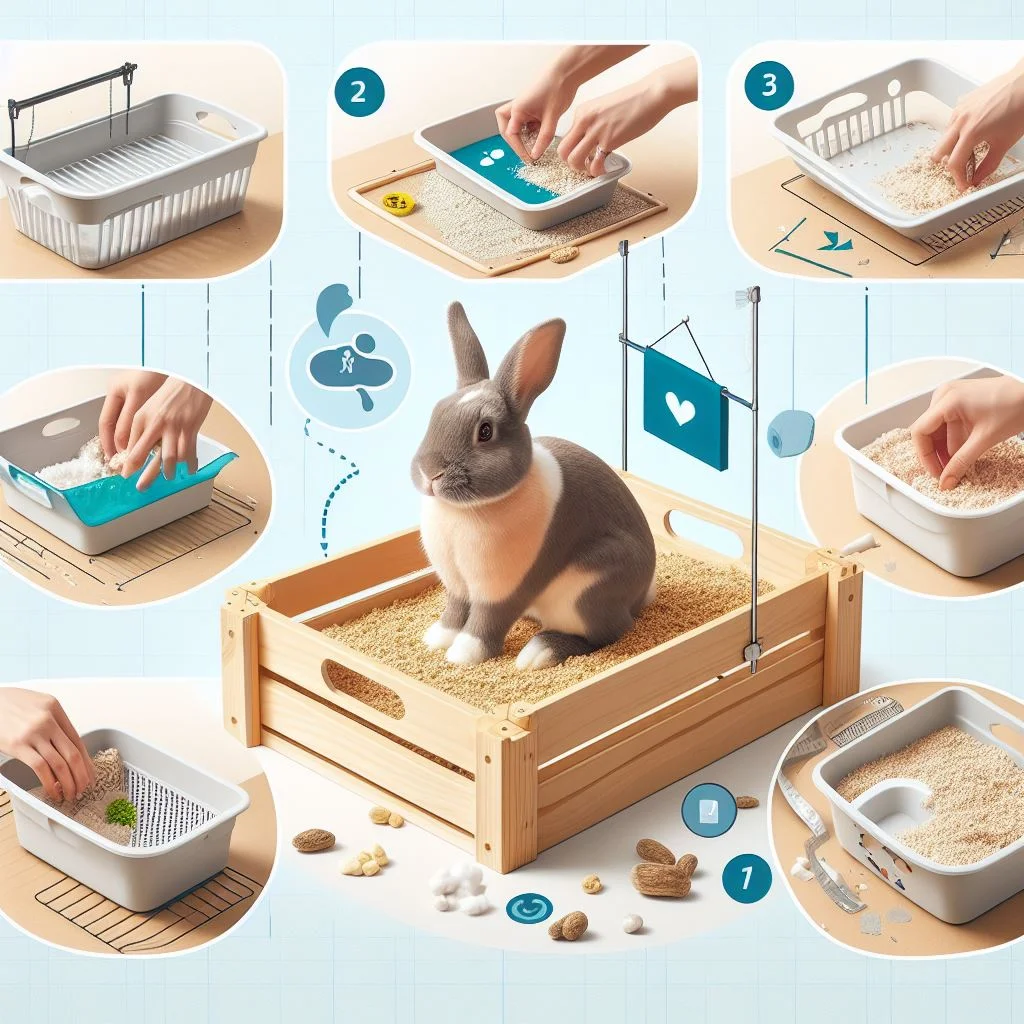
Observe Your Rabbit’s Behavior
Observing and understanding a rabbit’s behavior regarding defecation habits is essential for effective care and training. Rabbits are naturally clean animals and often designate a specific area for their droppings. To encourage them to poop in one place consistently, it’s crucial to comprehend their instincts and preferences.
Rabbits are territorial creatures who mark their territory through scent glands under their chins. You can identify their chosen bathroom area by observing where a rabbit typically leaves droppings. It’s essential to place a litter box in or near this location to facilitate their natural inclination to keep waste confined.
Pay attention to the type of substrate or bedding material your rabbit prefers. Some rabbits may have a preference for certain textures or styles of litter. Experiment with different materials, such as hay, paper-based bedding, or straw, and observe which one your rabbit is most comfortable using. Providing a comfortable and familiar environment will encourage them to use the designated space for defecation.
Consistency is key when training a rabbit. Ensure the litter box is always clean, as rabbits are likelier to use a tidy space. Remove soiled bedding promptly and replace it with fresh material. Additionally, when the rabbit uses the designated area, positive reinforcement through treats or gentle praise can reinforce the desired behavior.
Understand that patience is crucial in this process. Rabbits may take time to establish a routine, and accidents may happen. Avoid scolding the rabbit, as this can create anxiety and hinder training. Instead, continue to observe their behavior, adjust as needed, and provide positive reinforcement to encourage the desired bathroom habits.
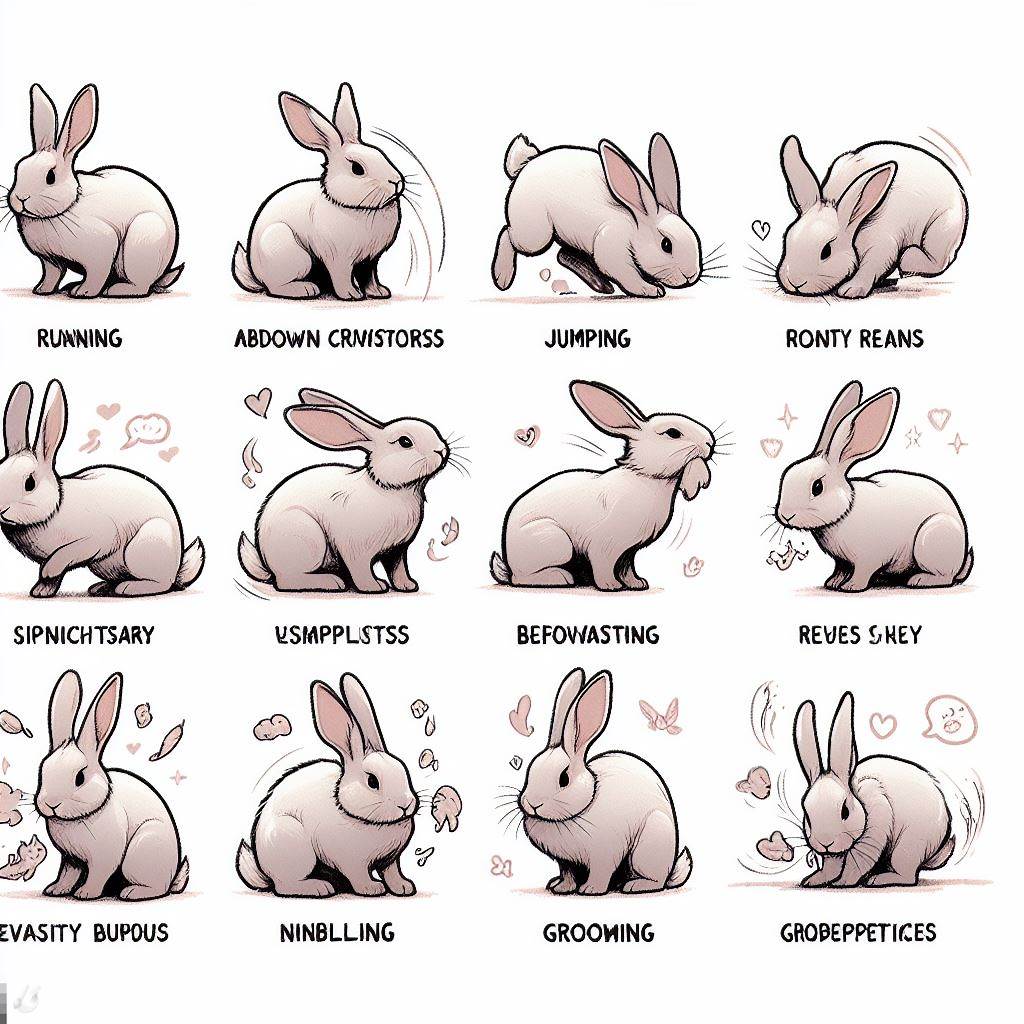
Selecting The Right Place For Your Rabbit Litter Box
Choosing the right place for a rabbit’s litter box is crucial for their well-being and your convenience. Rabbits are territorial animals with specific preferences, so thoughtful consideration is necessary. First and foremost, locate the litter box where your rabbit feels safe and secure. A quiet and peaceful corner of the room, away from loud noises and high foot traffic, is ideal. Rabbits are prey animals, and a calm environment will encourage them to use the litter box consistently.
Consider the accessibility of the chosen location. Ensure it’s easily reachable for your rabbit, especially if they have limited mobility or are housed in a multi-level enclosure. The litter box should be easily accessible without obstacles, promoting a stress-free experience for your rabbit. Additionally, rabbits tend to choose corners for elimination, so placing the litter box in a corner will align with their instincts and make the training process more intuitive.
Furthermore, rabbits are known for their cleanliness; the litter box should reflect this. Choose a package with low sides to allow easy entry and exit for your rabbit. Use a suitable litter material, such as paper-based or aspen shavings, and avoid pine or cedar, which can be harmful. Regularly clean the litter box to maintain hygiene and prevent potential aversions your rabbit may develop.
Observe your rabbit’s behavior and preferences. Some rabbits may have specific preferences for the type of litter or prefer a covered litter box for privacy. Paying attention to your rabbit’s reactions and adjusting accordingly creates a comfortable and efficient space for their litter needs, fostering a happy and healthy living environment.
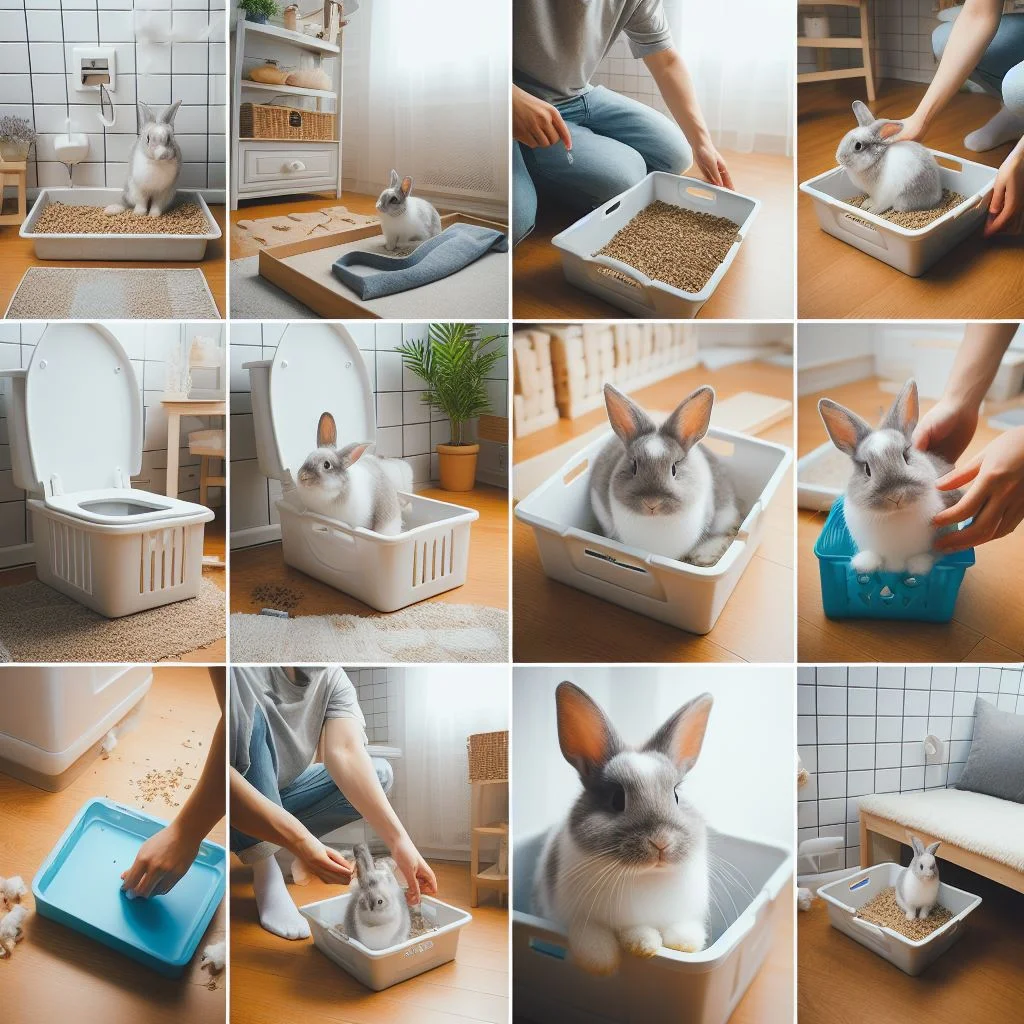
Litter Training Techniques For Your Rabbit
Litter box training is a practical and essential aspect of caring for a rabbit, ensuring a clean and healthy environment for the pet and its owner. To successfully train a rabbit to use a litter box, it’s crucial to understand these small mammals’ unique behaviors and instincts.
Firstly, choose an appropriate litter box for your rabbit. Rabbits are likelier to use a spacious litter box that is easy to access and has low sides for convenient entry. Fill the litter box with rabbit-safe bedding material, such as paper-based or pellet litter, avoiding clumping cat litter that may be harmful if ingested.
Understanding your rabbit’s instincts is critical to successful training. Rabbits are territorial animals, so placing the litter box in a consistent location within their living space helps them establish a routine. Observe your rabbit’s preferred elimination spots and gradually move the litter box closer to those areas during training.
Positive reinforcement plays a significant role in encouraging desired behavior. When your rabbit uses the litter box, praise them with gentle words and offer a small treat as a reward. Conversely, avoid scolding if accidents occur outside the litter box, as rabbits may not associate punishment with their actions. Instead, clean the area thoroughly to remove any scent markers that may attract them back to the same spot.
Consistency is crucial in rabbit litter box training. Clean the litter box regularly, ideally daily with the help of gloves, to maintain a hygienic environment and reinforce the habit. Additionally, as territorial disputes may arise, provide multiple litter boxes if you have more than one rabbit. By incorporating these techniques and understanding your rabbit’s behavior, you can successfully litter-train your furry companion, promoting a clean and harmonious living space for you and your pet.
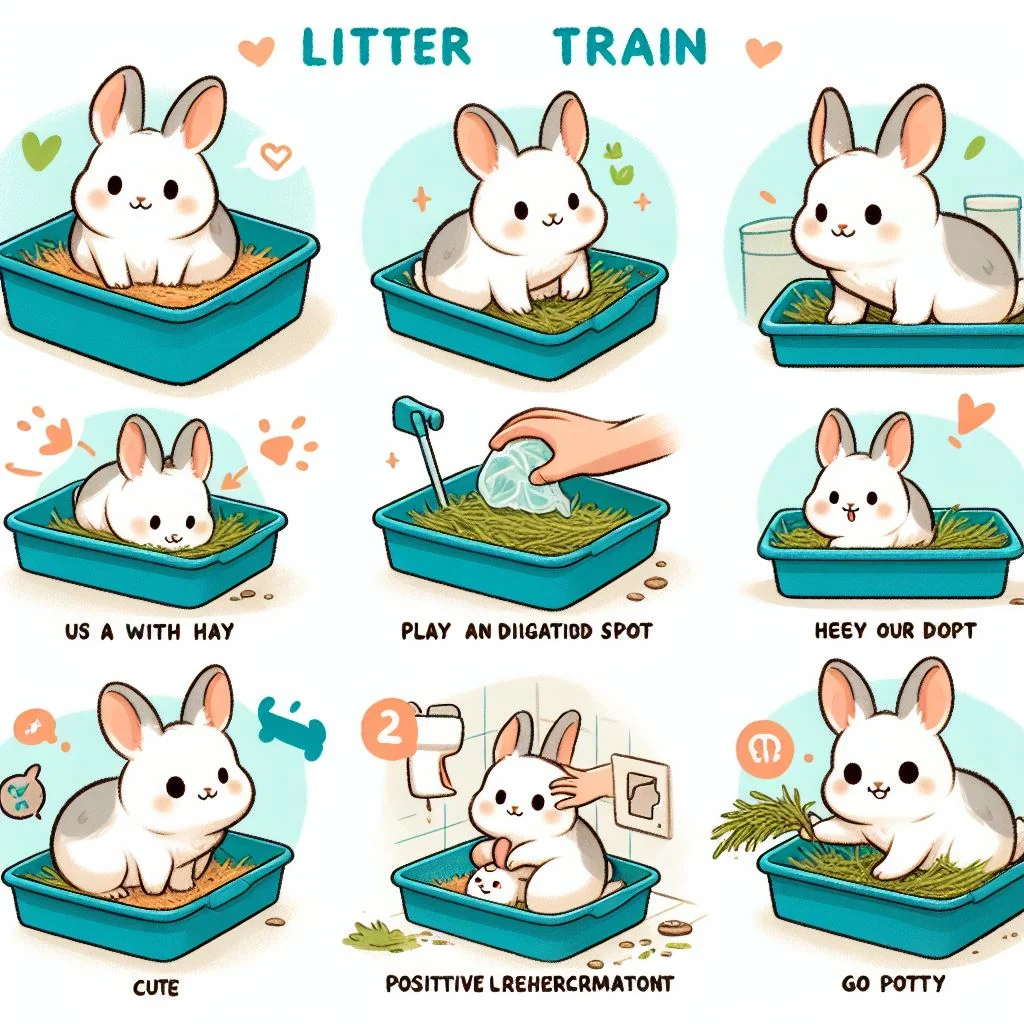
Maintaining a Clean Environment Handling Rabbit Droppings
Rabbits are delightful and social pets, but one common challenge for their owners is managing their bathroom habits. Rabbits are naturally inclined to leave droppings throughout their living space. This behavior stems from their instinct to mark territory and establish a sense of ownership. While it might be challenging to alter this instinct, there is an intriguing technique that some rabbit owners have found effective: transferring droppings. This method involves strategically relocating a rabbit’s droppings to encourage them to concentrate their bathroom activities in a specific area, helping to minimize the mess in the living space.
Rabbits have a keen sense of smell and use scent markings to communicate. You capitalize on this natural behavior by moving their droppings to a designated spot. The transferred droppings serve as a scent marker, signaling the rabbit that this is an acceptable place for bathroom activities. Over time, this can help establish a preferred location for your rabbit to relieve itself. Being patient and consistent in this process is essential, as rabbits may take time to adapt to the new scent-marked area.
To implement the dropping transfer technique
- Observe where your rabbit tends to leave droppings and select a designated litter area.
- Scoop up some droppings and place them in the chosen spot.
- Ensure the site is easily accessible for your rabbit and equipped with a suitable hay-filled litter box.
Rabbits often prefer to eat while they use the bathroom, and having hay nearby can encourage them to stay in the designated spot longer. Ensure you clearly distinguish between the designated area and the food bowls, cleaning them at least once a week. Refrain from placing food inside and discourage sleeping or playing within its confines. Avoid storing sharp objects in this space and opt for bedding materials that pose no risk to the eyes or ears, steering clear of wooden shavings to prevent potential injury. Regularly clean the litter box and replenish the hay to maintain a clean and inviting bathroom environment.
Dropping transfer and positive reinforcement play a crucial role in modifying rabbit behavior. When your rabbit uses the designated litter area, offer praise, treats, or affection. Positive experiences will reinforce the desired behavior and encourage your rabbit to continue using the designated spot. Consistency is vital in training any pet, so maintain the routine and support positive behavior to help your rabbit establish new bathroom habits. You can work toward a cleaner and more organized living space with your furry companion through patience, understanding, and strategic dropping management.
Rabbit Litter Addictive Aids For Your Rabbit
Pheromone-based sprays or litter additives designed to attract rabbits to a designated area leverage the power of chemical communication among these social animals. Rabbits naturally release pheromones, which are chemical signals that influence the behavior of others in their species. In this context, the idea is to mimic or enhance these natural signals to create a welcoming environment for rabbits in a specific location.
These products typically contain synthetic or extracted compounds that mimic the scent of rabbit pheromones. Applying the spray or adding the litter additive to a particular area creates a scent trail that signals to rabbits that this space is safe, familiar, and suitable for their presence. This can be particularly useful for encouraging rabbits to explore a new habitat, feel secure in an outdoor enclosure, or use a specific litter box.
Applying the pheromone-based spray can be as simple as evenly misting the designated area or objects within it. Similarly, incorporating the litter additive involves mixing it with the existing bedding or placing it strategically in a litter box. This process helps establish a positive association between the designated space and the comforting pheromone scent, encouraging rabbits to spend more time there.
These products can be especially beneficial when rabbits feel stressed or anxious, such as during introductions to new environments, meeting other rabbits, or training sessions. Using pheromone-based sprays or litter additives aligns with a holistic approach to rabbit care, emphasizing their natural behaviors and providing a secure and comfortable living environment.
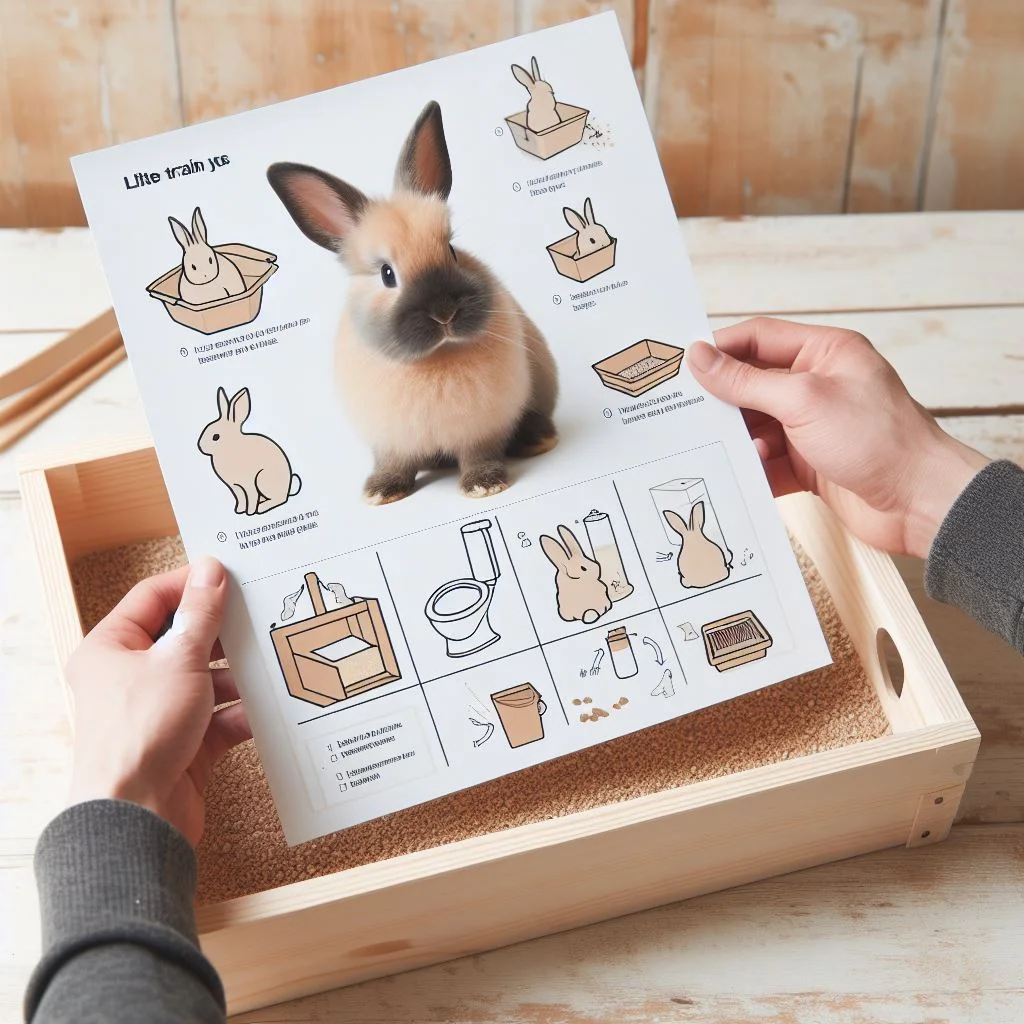
Can you train a rabbit to poop in one place?
Yes, rabbits can be trained to use a litter box. Start by placing the container in a corner of their enclosure where they naturally tend to go. Reward them with treats when they use it, and be patient as they learn.
How do I stop my rabbit from pooping everywhere?
To prevent scattered droppings, provide a designated litter box. Consistency is vital; clean the box regularly and discourage soiling in other areas by promptly cleaning up any accidents and placing soiled bedding in the litter box.
How do I stop my rabbit from peeing outside the litter box?
Ensure the litter box is the right size and has appropriate litter. Clean the box frequently, and if your rabbit continues to pee outside, consult a vet to rule out medical issues. Also, consider spaying/neutering, as it can reduce territorial marking.
How do you potty train a rabbit quickly?
Potty training involves placing a litter box in a consistent location, using suitable litter, and rewarding positive behavior. Supervise your rabbit during playtime, and gently redirect them to the litter box if they start to go elsewhere.
Is it safe to touch bunny poop?
Generally, rabbit droppings are safe to touch. However, practice good hygiene, especially if you have multiple rabbits or if they show signs of illness. Wash your hands thoroughly after handling droppings, and use gloves if needed. If in doubt, consult your veterinarian.
Conclusion
Transforming your rabbit’s bathroom habits into a clean and stress-free routine is achievable and enriching for your bond with your furry companion. By understanding rabbit behavior, selecting the proper litter box placement, employing effective litter training techniques, and considering innovative tools like dropping transfer and pheromone-based aids, you can create an environment that promotes positive habits. Patience, consistency, and positive reinforcement are the keys to success. With these insights and techniques, farewell to scattered messes and welcome a harmonious cohabitation with your well-trained rabbit.
